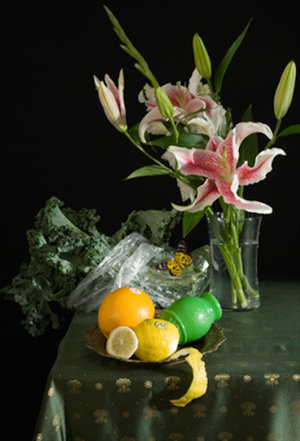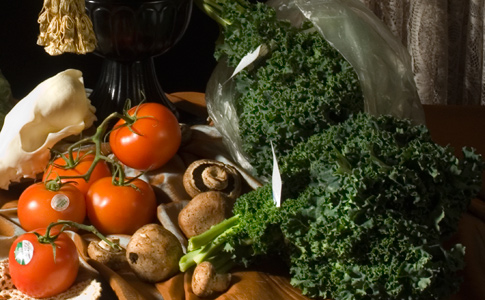“Tell me what you eat, and I will tell you what you are.” -Jean Anthelme Brillat-Savarin1
As an omnivore, the human body can survive and maintain its health on an astounding array of diets. Our ideas about the foods we eat, however, are cultural. Until only the past few generations, eating habits and food cultures were passed down the generations by the shared meal experiences of families and social groups. The industrial farming practices and global shipping routes developed in the 20th century upended these evolutionary relationships, supplanting the ideological roles of mother and tribe with supermarket capitalism. Not only do agribusinesses provide the diverse foods we eat, they provide their own cultural context, communicating new memes of taste, health, and culture. In a critique of the marketing of industrial organic foods, Michael Pollen unpacks such culinary signifiers in The Omnivores Dilemma:
“Taken as a whole, the story on offer in Whole Foods is a pastoral narrative in which farm animals live much as they did in the books we read as children, and our fruits and vegetables grow in well-composted soil … “Organic” on the label conjures up a rich narrative, even if it is the consumer who fills in most of the details, supplying the hero (American Family Farmer), the villain (Agribuisnessman), and the literary genre, which I’ve come to think of as Supermarket Pastoral. By now we may know better than to believe this too simple story, but not much better, and the grocery store poets do everything they can to encourage us in our willing suspension of disbelief.”2
This disconnect between our ideals of food production and its practical realities is bridged by visual language. As the narratives are consumed, they produce comfortable illusions about the substance of our food, providing a false culinary wholeness, like a gastronomic Potemkin village.
It is the cocoon of food packaging that envelops Stephanie Dean’s Modern Groceries series in contemporary consumer life. The photographs reenact Dutch still life master paintings from the fifteenth century, capturing the oblique soft light and deep shadows in saturated color. Objects are arranged with the same aesthetic fetish, displaying the bounties of the harvest and trade, as well as objects of curiosity, arranged perfectly askew over intricate linens and drapery. The produce, meats, and cheeses in the photographs are the same as their historical counterparts, but revealed to be modern industrial agricultural products by their packaging. Their presence subverts the bucolic ideals of the produce; the plastic is there to protect the food while it is transported globally and provides the surface where a plant can be re-branded into an emblem of the Supermarket Pastoral. The most visually subtle image in the series, “Still Life with Strawberries,” generates this subversion with only transparent plastics and a cluster of pricing stickers. An ironic disposable quality leaches from the packages, given their synthetic ecological permanence, in contrast to the finely crafted tableware and voluptuous produce.

Citrus, 2008
By employing the visual archetype of the still life, Dean frames the work within the historical tropes of the Dutch master painting. The Dutch still life marked a shift in the visual content and economics of European painting in the fifteenth century. These canvases were commissioned by a rising merchant class, not the aristocracy or church, who had underwritten most previous art production. The merchant-traders sought depictions of what brought them power – goods produced by guilds or secured in trade – just as the aristocrats and popes commissioned works of religious, mythical or political authority that supported their ideological dominance. These paintings built a representative system that redefined the commercial products of the time into an ideal, much like the marketing techniques documented in contemporary grocery stores by Michael Pollan. Furthermore, the down-to-earth aesthetic of understated wealth on display in the paintings mirrors the criticisms of elitism and affluence frequently pointed at today’s progressive food movements such as Slow Food.
In this way, the Modern Groceries series can be seen as a critique not only of contemporary agricultural practices, but of the manipulative power of visual language. At the same time, the photographs delight in the pleasure of the food and the seductive beauty of nature and light. The images dwell in a cognitive disconnect of the sensory and the political – a feeling that many of us experience every week, as we push our carts down the aisles of our favorite grocery markets.

1 Jean Anthelme Brillat-Savarin, The Physiology of Taste, 1825
2 Michael Pollan, The Omnivore’s Dilemma: A Natural History of Four Meals (New York, USA: Penguin Group (USA) Inc., 2006), 137.
Brian Andrews is an artist who works with photography, video, and emerging media. Not content to just make things, he records as the west coast producer for Bad at Sports Contemporary Art Podcast. His critical writings can be found on Artnet and in Beautiful/Decay Magazine, as well as in numerous catalogs. Currently, he is the Course Director for the compositing program in animation and visual effects at Expression College for Digital Art in Emeryville, California.













